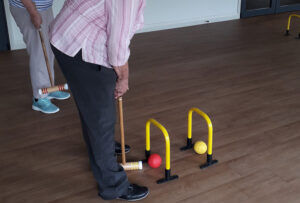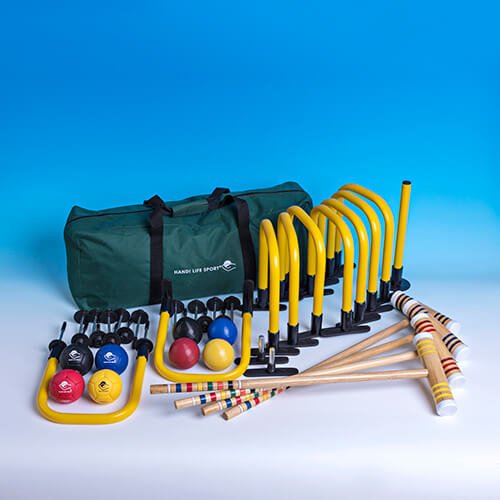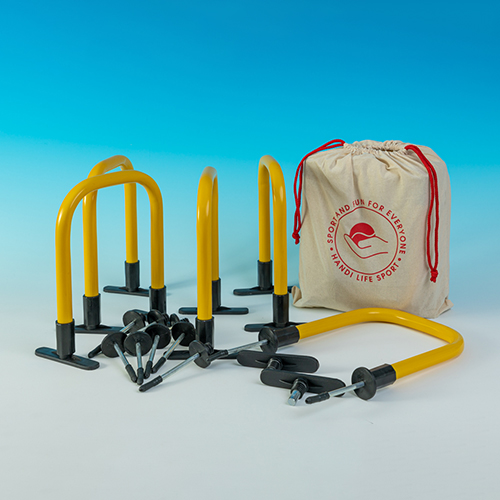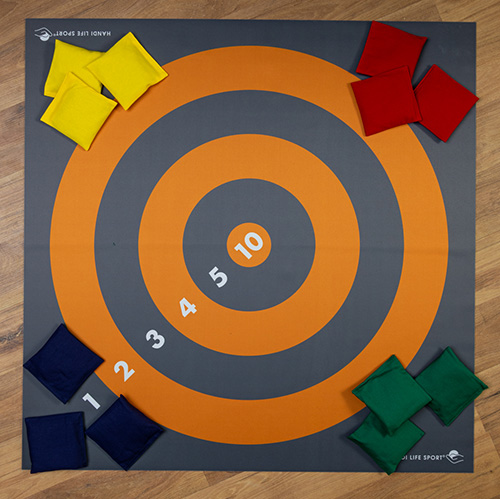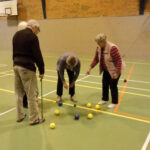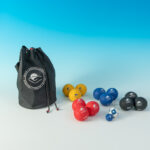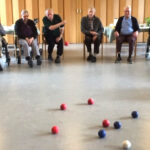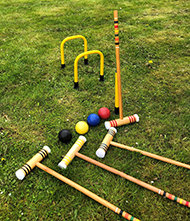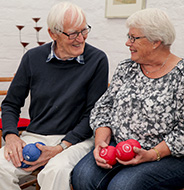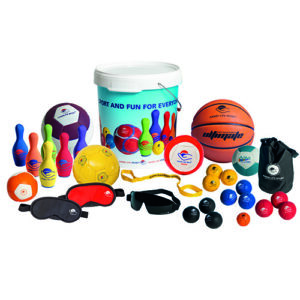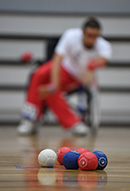- 1
- 2
- 3
- 4
- 6
- 7
- 8
CROQUET RULES
There are several different ways of playing croquet. Common to them all is that it is played on a court that ideally measures 30×20 meter. Naturally, the court is adjusted to the conditions. You can play either in teams or individually with 2-6 participants.
- The size of the croquet court is adapted according to the conditions. An outdoor court can measure 20 x 30 metres, but it can be larger or smaller.
- 2, 3 or 4 players participate. There is more fun to be had if 4 players participate, so two can play against two.
- The ball is placed in between the start peg and the first hoop. One after the other, the players hit the balls through the hoops in the following sequence: Red, blue, yellow and black.
- When you pass a hoop, an extra stroke is gained – a bonus stroke.
- If you hit another’s ball you can choose between: 2 bonus strokes. The player places his ball one mallet head’s distance from the hit ball after which the 2 bonus strokes are taken. OR: A croquade.
- The person who executes a croquade places his ball right up against the ball that has been hit. The player then holds his ball steady with his hand or foot and hits it so that the croquade ball is shot away. You can also choose to carry out a loose croquade, i.e. that you do not hold your own ball steady during the stroke. The partner’s ball may be exposed to croquade. After a croquade, you have the right to an extra stroke.
- When the player has passed hoop 10 without hitting the start peg, all other balls must be hit (as in a croquade) before the player can complete the game by hitting the start peg.
- If the player hits the start peg before the other balls are croquade, the player must move back to hoop 8 and continue from there.
- It’s all about getting through the course with as few strokes as possible. The person who uses the least strokes is the winner.
You can also play following simpler rules where a croquade is not compulsory.










